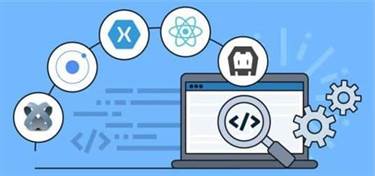Providers have robust methods of securing the cloud and they keep a laser focus on encryption andcloud security. Users of the cloud, however, need to be responsible for application security and securing the environment they create. As computing has expanded to different devices like hard disk cloud computing technology solutions drives and mobile phones, TCG has extended the security measures to include these devices. It provides ability to create a unified data protection policy across all clouds. For small scale businesses who are looking for cutting cost on IT infrastructure, IaaS is one of the solutions.
Global Cloud Computing in Banking Market Intelligence Report … – Business Wire
Global Cloud Computing in Banking Market Intelligence Report ….
Posted: Thu, 18 May 2023 15:51:00 GMT [source]
Security plays an important role in cloud technology and providers take it extremely seriously. Plus, there are many regulatory bodies and compliance requirements from industries of all kinds driving the need for the cloud to be both as accessible as possible, while also being as secure as possible. SaaS is the most commonly used cloud application service and is becoming a dominant way for organizations to access software applications.
Support services
Let us now understand what Cloud Computing is with examples in this article. Also, you can go for Cloud Computing training to get a deeper knowledge of Cloud Computing. To further define the concept of cloud computing, let’s look at each of the features of this type of cloud applications.
This kind of cloud emerges from the rise of ARM-based system-on-chip for server-class computing. The vast majority of cloud customers consume public cloud computing services over the internet, which are hosted in large, remote data centers maintained by cloud providers. The most common type of cloud computing, SaaS , delivers prebuilt applications to the browsers of customers who pay per seat or by usage, exemplified by such popular apps as Salesforce, Google Docs, or Microsoft Teams. Next in line is IaaS , which offers vast, virtualized compute, storage, and network infrastructure upon which customers build their own applications, often with the aid of providers’ API-accessible services. Hybrid clouds are a combination of private and public clouds , connected together with technology that enables data and application to work together. Sensitive services and applications can be kept in the secure private cloud while publicly-accessible web servers and customer-facing endpoints can live in the public cloud.
Service models
Magento Commerce Cloud is an example of PaaS commonly used by e-commerce companies to build and manage custom online stores. The future with cloud services looks very bright with endless opportunities to explore and the survival of the business depends on whether it can adapt the new changes. So, take advantage of Cloud Computing and start your KnowledgeHut Cloud Computing training. You pay only for the services you use; this eliminates capital expenses of buying hardware, software, setting up datacenters and operating cost for the same. Demonstrates knowledge and understanding of core AWS services, uses, along with basic AWS architecture best practices.

That frees organizations from having to find and keep cybersecurity talent, assemble dedicated compliance teams, troubleshoot bugs, and adapt to new security threats. Cloud vendors regularly update security protocols to protect users from cyber threats. Cloud-based tools allow for collaborative coding, collaborative document management, business intelligence collaboration, and a host of other productivity drivers. As a result, cloud-based communication and collaboration through unified-communication-as-a-service , contact-center-as-a-service , and communication-platform-as-a-service will be top use cases in 2021.
What Are the Disadvantages of Cloud Computing?
Once set up, companies can plug in to their chosen provider’s infrastructure and access resources from virtually any device with an internet connection. For starters, cloud computing is often more cost-effective for businesses. Rather than building, maintaining and upgrading servers and databases, which costs a lot of money, companies https://globalcloudteam.com/ can instead spend it on renting IT resources or applications from cloud computing providers. PaaS is a category of cloud computing that provides a platform and environment to allow developers to build applications and services over the internet. PaaS services are hosted in the cloud and accessed by users simply via their web browser.
You can use the cloud to access applications, data, and development tools from virtually anywhere. Whether you’re working on your phone from a crowded train in Chicago or on your laptop at a hotel in Hong Kong, you can access the same information because it all lives online. Enables a type of enterprise IT design where code is modular and isolated. It is a cloud computing execution model where resources are provided as per real-time demand, assigned to each isolated module.
AWS Cloud Computing
With this, software, tasks, projects and teams can be organized online which simplifies the daily operations of a company thanks to remote access, and collaborative options. All users have online access from the website, which facilitates internal communication and company performance. Google Cloud offers all of Google’s cloud services, such as Cloud Storage, Compute Engine, Anthos…

Cloud providers are locked in ongoing competition for cloud market share, so the public cloud continues to evolve, expand and diversify its range of services. This has led public IaaS providers to offer far more than common compute and storage instances. Today, however, organizations are more likely to migrate mission-critical workloads to public clouds. One of the reasons for this shift is that business executives who want to ensure that their companies can compete in the new world of digital transformation are demanding the public cloud. Time sharing enabled users to access numerous instances of computing mainframes simultaneously, maximizing processing power and minimizing downtime. This idea represents the first use of shared computing resources, the foundation of modern cloud computing.
Collaboration platforms
Public clouds deliver computing resources — servers, storage, applications, etc. — over the internet from a cloud service provider, such as AWS and Microsoft Azure. Cloud providers own and operate all hardware, software, and other supporting infrastructure. No more buying servers, updating applications or operating systems, or decommissioning and disposing of hardware or software when it is out of date, as it is all taken care of by the supplier. For commodity applications, such as email, it can make sense to switch to a cloud provider, rather than rely on in-house skills. That means being able to connect and integrate cloud services from multiple vendors is going to be a new and increasing challenge for business. Problems here include skills shortages and workflow differences between cloud environments.
- The back end functions as a repository, storing data that is accessed by the front end.
- These services can help not only complement, but often provide necessary services for agile and DevOps teams.
- End users can easily process, store, retrieve and recover resources in the cloud.
- It is implemented on servers owned and maintained by the organization and accessed over the internet or through a private internal network.
Generally, when contemplating cloud adoption, many enterprises have been mainly focused on new cloud-native applications — that is, designing and building applications specifically intended to use cloud services. They haven’t been willing to move their most mission-critical apps into the public cloud. However, these enterprises are now beginning to realize that the cloud is ready for the enterprise if they select the right cloud platforms, i.e., those that have a history of serving the needs of the enterprise. Security remains a primary concern for businesses contemplating cloud adoption — especially public cloud adoption.
IaaS — Infrastructure as a Service
As the use of cloud computing continues to become more prevalent, the need for network and computer systems administrators will continue. While there are many benefits to cloud computing, there are also challenges to consider. Specifically, the cost of migrating to the cloud could outweigh the potential return on investment. In today’s crowded marketplace, having a great product or service is not enough. To succeed, you need to create a connection with your audience that goes beyond the features and benefits of your offerings.




